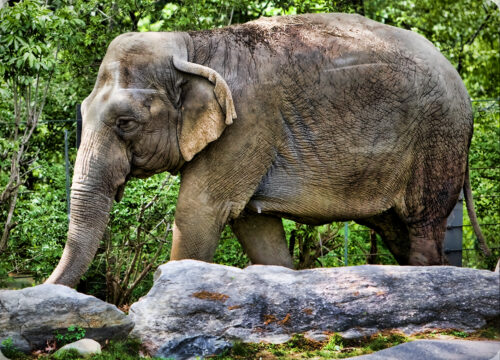Image courtesy of Jeff Bergman on Flickr.
Animals—they are the lovable beings that are generally seen as allies to humans, bringing joy and perspective to our lives. But what happens when there is trouble in paradise—when animals and humans begin to have conflict? And does nature handle it, or do we take it into our own hands? Mary Roach, in her new book Fuzz: When Nature Breaks The Law, analyzes this issue from a humorous and first-person point of view.
Roach demonstrates a beautiful case of nature facilitating cohabitation between animals and humans in Aspen, Colorado. We’ve all seen animals snooping for food, but according to Roach, the bears of this mountainous town take it to another level. Here, residents don’t just find bears dumpster-diving; they find bears snatching food off dinner tables and hiding in the rooms of houses. There is hope for the future though: laid-back bears, like an infamous one nicknamed “Fat Albert,” are favored by natural selection because they calmly carry out their food operations in such a suave manner that homeowners can tolerate it. They are therefore more likely to get away, survive, and pass on their calm temperaments to their offspring.
Roach finds a contrasting example in India’s more lethal, man-eating leopards. Expert animal handlers have tried relocating them, but particularly aggressive species are even more dangerous after being moved. Moreover, relocation would likely create a dilemma over whether it is ethical to remove animals from their natural habitats. To address this ostensibly unsolvable problem, scientists attempt to control the density of these populations, rather than remove them altogether.
Elsewhere, Roach writes, humans are using molecular biology and chemistry to alter the animals around them. Aaron Shiels, a wildlife biologist, is working on an escape-proof habitat for mice, which would be genetically modified to only produce male offspring. This would be done with CRISPR technology, which targets a gene and cuts it out or replaces it. In isolation, Shiels’s work would eventually lead to a less dense population of mice. Additionally, a few US cities are trying a contraceptive on rats called Contra-Pest, which uses 4-vinylcyclohexen diepoxide and triptolide, two components that impact the reproductive viability of certain species.
People can also shift their mindsets when it comes to wildlife. On an individual level, perceiving interactions with nature as an inherent part of life rather than a burden could give people peace of mind. Perhaps we should remove ourselves from animals’ natural habitats rather than the other way around. According to Roach, people have invaded Bengali forests and turned elephant habitats into their own, forcing the elephants to aggressively come into villages looking for refuge. Indeed, sometimes we as people are our own worst enemies, villains to the very animals we love and cherish. We mustn’t maliciously take advantage of our manpower and intellect, but rather use it to facilitate human-animal coexistence in a way that is mutually beneficial.

